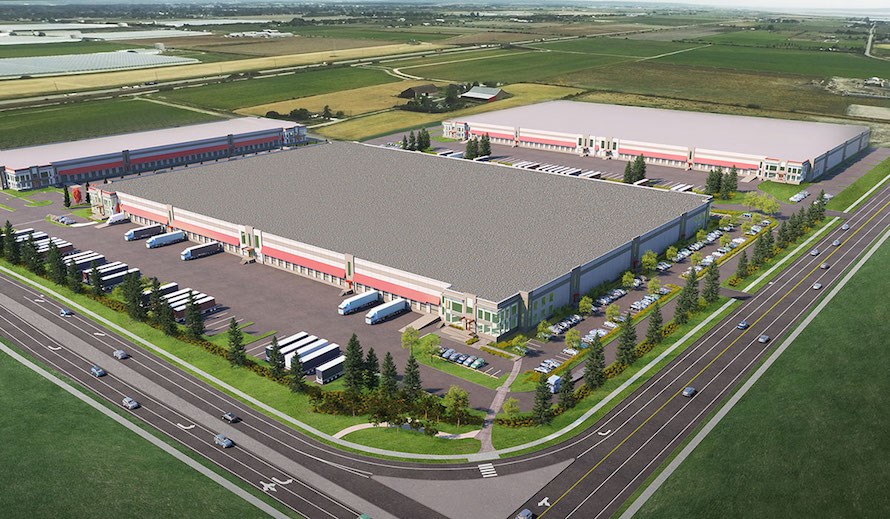Amazon.com Inc. is a major player in the Vancouver real estate market, leasing chunks of office space downtown and committing to space for 3,000 workers in the redeveloped post office building on West Georgia. It’s also been opening logistics facilities outside the core, with the new, 450,000-square-foot fulfilment centre on Tsawaassen First Nation lands, set to create 800 jobs (hiring is about to start).
The centre will open as Amazon ramps up its in-house distribution capacity, a move some observers say is a prelude to its competing against some of the companies that formerly distributed its goods. This could, effectively, allow it to turn the tables by offering distribution services for other vendors.
The model is one already in action in the Lower Mainland at Food-X Urban Delivery, a venture of Peter van Stolk, founder of 22-year-old Sustainable Produce Urban Delivery Inc. (SPUD).
This isn’t small potatoes. The facility, which opened last fall, is 74,000 square feet and can handle 4,200 orders a day, or about $400 million worth of product. Its structure allows expansion to upwards of 5,500 orders a day, but it’s currently at just a quarter of its capacity, with more than 1,000 orders a day heading to customers.
Speaking at the Vancouver Real Estate Forum in April, van Stolk likened the “microfulfilment” centre to the 1,000-square-foot fulfilment centres being built to serve dense urban markets in China. Vancouver may not have the density of Chinese cities, but van Stolk is counting on a high throughput of product to addresses in the Lower Mainland to make it work. It distributes both its own products and those of Wal-Mart.
A pioneer of urban grocery delivery, van Stolk sees partnering with Wal-Mart as an extension of SPUD’s well-established social mandate. It’s making better use of its own distribution network to address inventory waste at Wal-Mart.
During a recent tour, van Stolk said the facility was developed with the assistance of former Amazon staff who sketched out an efficient retrieval, packing and tracking system. It keeps orders from SPUD and Wal-Mart separate, but aggregates them for efficient distribution by SPUD’s drivers.
A collaborative approach is key. It improves the use of industrial space in the tight Vancouver market and also reduces the number of distribution vehicles on the road.
“We think we can help Wal-Mart, we think we can help other retailers,” he said.
Highways squeezed
Tucking into small spaces close to the core, as SPUD is doing, may be a wise move. A study two years ago by Colliers International found that Metro Vancouver had just 34 centimetres of highway per resident – less than every other major urban centre on the continent. Put another way, the region had just 3.6 kilometres of highway for every million feet of industrial space at the time, a ratio that’s dropped as industrial construction has scrambled to keep pace with demand.
Anything that makes distribution more efficient is key as the final mile becomes more challenging. The growing demand for fulfilment space close to the core is adding to the pressure, especially in space-scrunched markets like Vancouver where supply can’t keep pace.
Two years ago, local brokers such as Baktash Kasraei of Jones Lang LaSalle’s supply chain logistics group, said demand was pushing up lease rates for last-mile distribution space, but “the bigger trouble coming up is the lack of available space.”
According to a recent retail market update by Altus Group, things haven’t changed.
“The intensification of e-commerce and logistics services will continue to spur demand for industrial space even further,” it said. “Consumer expectations for same-day or next-day goods are likely to keep growing, and the lack of well-positioned industrial space is placing a significant strain on various retailers and e-commerce giants that depend on a network of distribution centres.”



